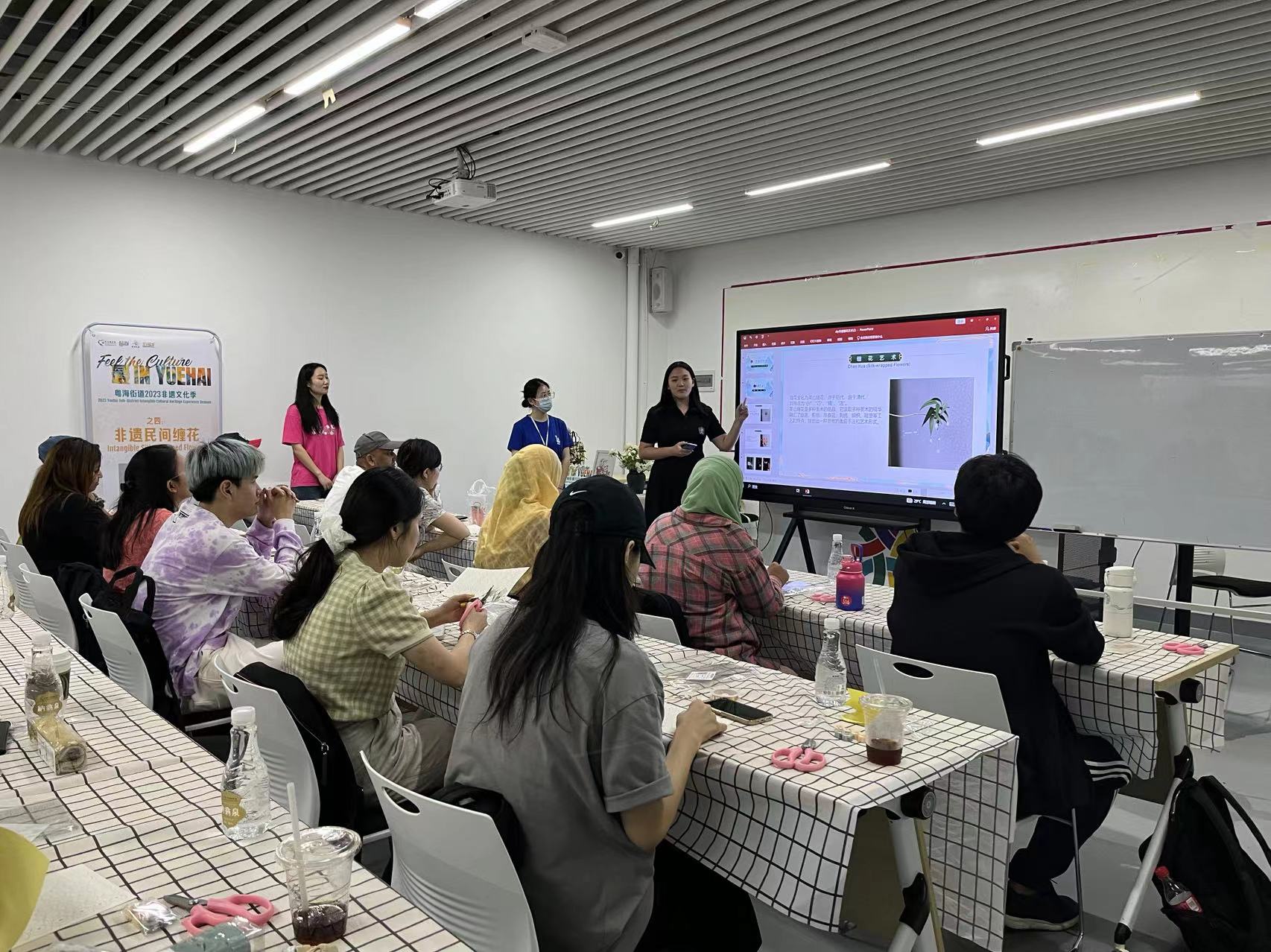In the afternoon of November 2, 2023, International students of our school participated in the intangible cultural experience activity in Room 201 of Zhaoxi Building: Hand wrapping
Before the activity began, the lecturer first introduced the materials used in the activity, and help everyone to understand the historical background and production process of winding silk. Tanghua originated in the Ming Dynasty and flourished in the Qing Dynasty. There are very few existing folk collections, and it is listed as the intangible heritage protection project of Hubei Province. A piece of cardboard, a piece of copper wire, some multi-colored silk thread, winding out the flower that never fades in Chinese culture - the winding flower. Also known as "three-dimensional embroidery", "line art sculpture" and "three-dimensional Gongbi painting", it integrates a variety of arts, both lifelike like Chinese painting Gongbi painting, but also has the skill of embroidery with thread. The winding flower has the characteristics of "small", "clever", "fine" and "lively". "Small" refers to the small size of the wrapped flower, "clever" refers to the ingenious idea of the wrapped flower meaning auspicious, "fine" refers to the production of the wrapped flower requires fine skills, "live" refers to the flexible form of the wrapped flower.

In the course of the introduction by the lecturer, the international students listened attentively and began to actively make works under the guidance of the lecturer. They first follow the steps to wrap the stamens together with silk, to be wrapped after the stamens placed aside for use, then overlap the copper wire and cardboard, with green silk wire wound into a leaf, and finally the stamens and leaves together, a lifelike osmanthus brooch is done.


Through this experience, the international students experienced the Chinese nation's unremitting pursuit of beautiful things and extraordinary creativity, and also further understood the intangible cultural heritage.



